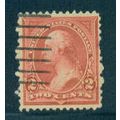Glastonbury, Somerset - Glastonbury Tor - Dixon postcard c.1960s
- Condition : Used
- Dispatch : 2 Days
- Brand : None
- ID# : 218998799
- Quantity : 1 item
- Views : 61
- Location : United Kingdom

- Seller : justthebook (+1699)
- Barcode : None
- Start : Mon 18 Sep 2023 17:00:14 (EDT)
- Close : Run Until Sold
- Remain : Run Until Sold
Checks/Cheques
 for 1 item(s) edit
for 1 item(s) edit
Shipping Calculator
More Listings from This Seller view all
Seller's Description
- Postcard
- Picture / Image: Glastonbury Tor, Somerset
- Publisher: J Arthur Dixon (Som. 295)
- Postally used: no
- Stamp: n/a
- Postmark(s): n/a
- Sent to: n/a
- Notes / condition:
Please ask if you need any other information and I will do the best I can to answer.
Image may be low res for illustrative purposes - if you need a higher definition image then please contact me and I may be able to send one. No cards have been trimmed (unless stated).
------------------------------------------------
Postage & Packing:
Postage and packing charge should be showing for your location (contact if not sure).
No additional charges for more than one postcard. You can buy as many postcards from me as you like and you will just pay the fee above once. Please wait for combined invoice. (If buying postcards with other things such as books, please contact or wait for invoice before paying).
Payment Methods:
UK - PayPal, Cheque (from UK bank) or postal order
Outside UK: PayPal ONLY (unless otherwise stated) please. NO non-UK currency checks or money orders (sorry).
NOTE: All postcards are sent in brand new stiffened envelopes which I have bought for the task. These are specially made to protect postcards and you may be able to re-use them. In addition there are other costs to sending so the above charge is not just for the stamp!
I will give a full refund if you are not fully satisfied with the postcard.
----------------------------------------------
Text from the free encyclopedia WIKIPEDIA may appear below to give a little background information (internal links may not work) :
*************
Glastonbury Tor is a hill near Glastonbury in the English county of Somerset, topped by the roofless St Michael's Tower, a Grade I listed building.[2] The whole site is managed by the National Trust, and has been designated a scheduled monument.[1][3]
The conical hill of clay and Blue Lias rises from the Somerset Levels. It was formed when surrounding softer deposits were eroded, leaving the hard cap of sandstone exposed. The slopes of the hill are terraced, but the method by which they were formed remains unexplained. Artefacts from human visitation have been found, dating from the Iron Age to Roman eras.
Several buildings were constructed on the summit during the Saxon and early medieval periods; they have been interpreted as an early church and monks' hermitage. The head of a wheel cross dating from the 10th or 11th century has been recovered. The original wooden church was destroyed by an earthquake in 1275, and the stone Church of St Michael built on the site in the 14th century. Its tower remains, although it has been restored and partially rebuilt several times. Archaeological excavations during the 20th century sought to clarify the background of the monument and church, but some aspects of their history remain unexplained. The Tor is mentioned in Celtic mythology, particularly in myths linked to King Arthur, and has a number of other enduring mythological and spiritual associations.
The Tor is in the middle of the Summerland Meadows, part of the Somerset Levels,[10] rising to an elevation of 518 feet (158 m).[1] The plain is reclaimed fen above which the Tor is clearly visible for miles around. It has been described as an island but actually sits at the western end of a peninsula washed on three sides by the River Brue.[11]
The Tor is formed from rocks dating from the early Jurassic Period, namely varied layers of Lias Group strata. The uppermost of these, forming the Tor itself, are a succession of rocks assigned to the Bridport Sand Formation. These rocks sit upon strata forming the broader hill on which the Tor stands; the various layers of the Beacon Limestone Formation and the Dyrham Formation.[12][13] The Bridport Sands have acted as a caprock protecting the lower layers from erosion. The iron-rich waters of Chalice Well, a spring at the base of the Tor, flow out as an artesian well impregnating the sandstone around it with iron oxidesthat have reinforced it to produce the caprock.[14] Iron-rich but oxygen-poor water in the aquifer carries dissolved iron (II) "ferrous" iron, but as the water surfaces and its oxygen content rises, the oxidised iron (III) "ferric" iron drops out as insoluble "rusty" oxides that bind to the surrounding stone, hardening it.[15]
The low-lying damp ground can produce a visual effect known as a Fata Morgana when the Tor appears to rise out of the mist.[16] This optical phenomenon occurs because rays of light are strongly bent when they pass through air layers of different temperatures in a steep thermal inversion where an atmospheric duct has formed.[17] The Italian term Fata Morgana is derived from the name of Morgan le Fay, a powerful sorceress in Arthurian legend.[18]
The sides of the Tor have seven deep, roughly symmetrical terraces, or lynchets. Their formation remains a mystery[19] with many possible explanations. They may have been formed as a result of natural differentiation of the layers of Lias stone and clay used by farmers during the Middle Ages as terraced hills to make ploughing for crops easier.[20] Author Nicholas Mann questions this theory. If agriculture had been the reason for the creation of the terraces, it would be expected that the effort would be concentrated on the south side, where the sunny conditions would provide a good yield, but the terraces are equally deep on the northern side, which would provide little benefit. Additionally, none of the other slopes of the island have been terraced, even though the more sheltered locations would provide a greater return on the labour involved.[21] Alternatively, the flattened paths may have been created by the hooves of grazing cattle.[22]
Other explanations have been suggested for the terraces, including the construction of defensive ramparts.[22] Iron Age hill forts including the nearby Cadbury Castle in Somerset show evidence of extensive fortification of their slopes. The normal form of ramparts is a bank and ditch, but there is no evidence of this arrangement on the Tor. South Cadbury, one of the most extensively fortified places in early Britain, had three concentric rings of banks and ditches supporting an 18-hectare (44-acre) enclosure. By contrast, the Tor has seven rings and very little space on top for the safekeeping of a community.[23] It has been suggested that a defensive function may have been linked with Ponter's Ball Dyke, a linear earthwork about 1 kilometre (0.62 mi) east of the Tor.[24][25] It consists of an embankment with a ditch on the east side.[25] The purpose and provenance of the dyke are unclear. It is possible that it was part of a longer defensive barrier associated with New Ditch, three miles to the south-west, which is built in a similar manner. It has been suggested by Ralegh Radford that it is part of a great Celtic sanctuary, probably 3rd century BC, while others, including Philip Rahtz, date it to the post-Roman period and link it to the Dark Age occupation on Glastonbury Tor. The 1970 excavation suggests the 12th century or later.[26] The historian Ronald Hutton also mentions the alternative possibility that the terraces are the remains of a medieval "spiral walkway" created for pilgrims to reach the church on the summit,[27] similar to that at Whitby Abbey.[28]
Another suggestion is that the terraces are the remains of a three-dimensional labyrinth,[29] first proposed by Geoffrey Russell in 1968. He states that the classical labyrinth (Caerdroia), a design found all over the Neolithic world, can be easily transposed onto the Tor, so that by walking around the terraces a person eventually reaches the top in the same pattern.[30][31] Evaluating this hypothesis is not easy. A labyrinth would very likely place the terraces in the Neolithic era,[32] but given the amount of occupation since then, there may have been substantial modifications by farmers and/or monks and conclusive excavations have not been carried out.[28] In a more recent book, Hutton writes that "the labyrinth does not seem to be an ancient sacred structure".[33]
Listing Information
| Listing Type | Gallery Listing |
| Listing ID# | 218998799 |
| Start Time | Mon 18 Sep 2023 17:00:14 (EDT) |
| Close Time | Run Until Sold |
| Starting Bid | Fixed Price (no bidding) |
| Item Condition | Used |
| Bids | 0 |
| Views | 61 |
| Dispatch Time | 2 Days |
| Quantity | 1 |
| Location | United Kingdom |
| Auto Extend | No |


















